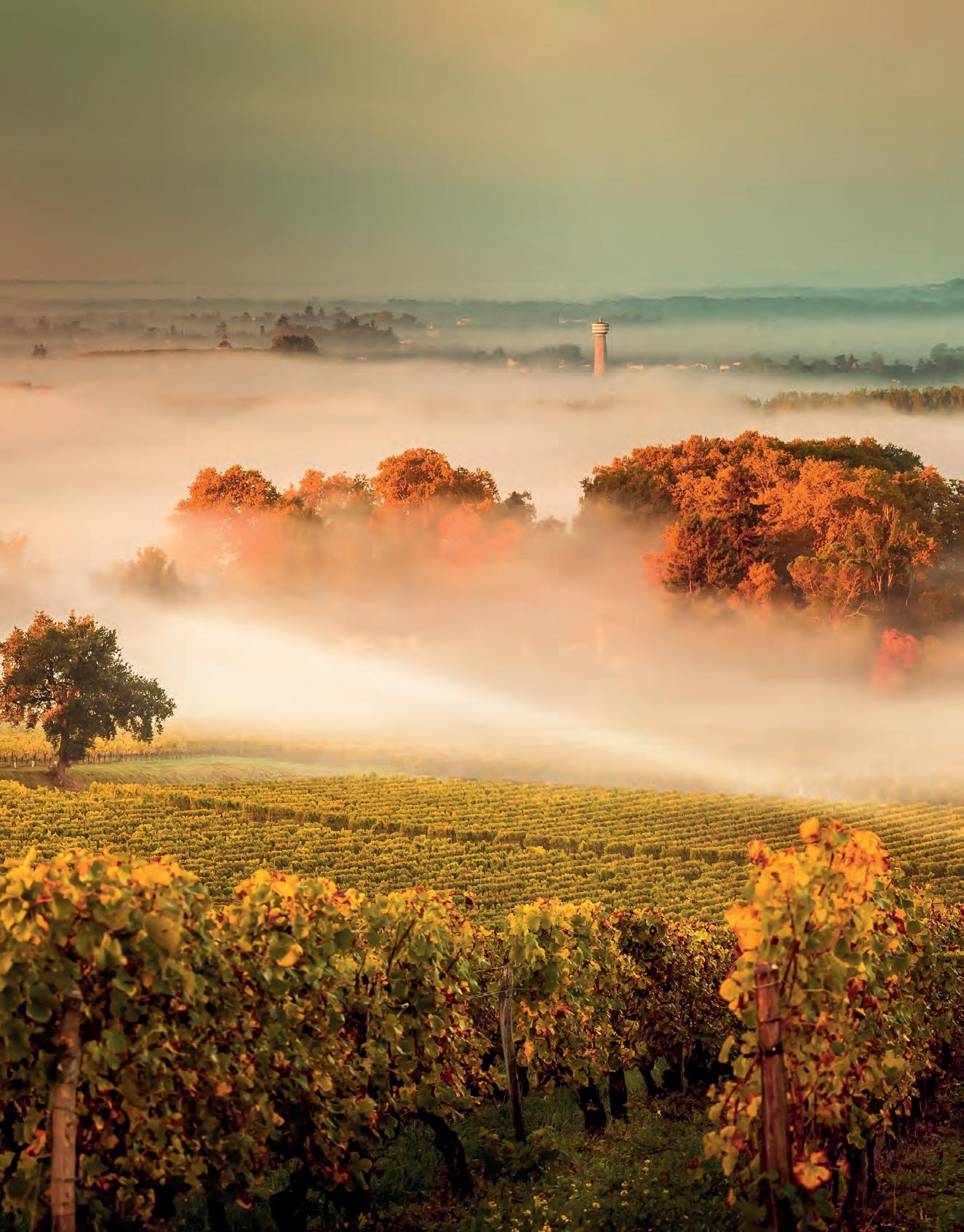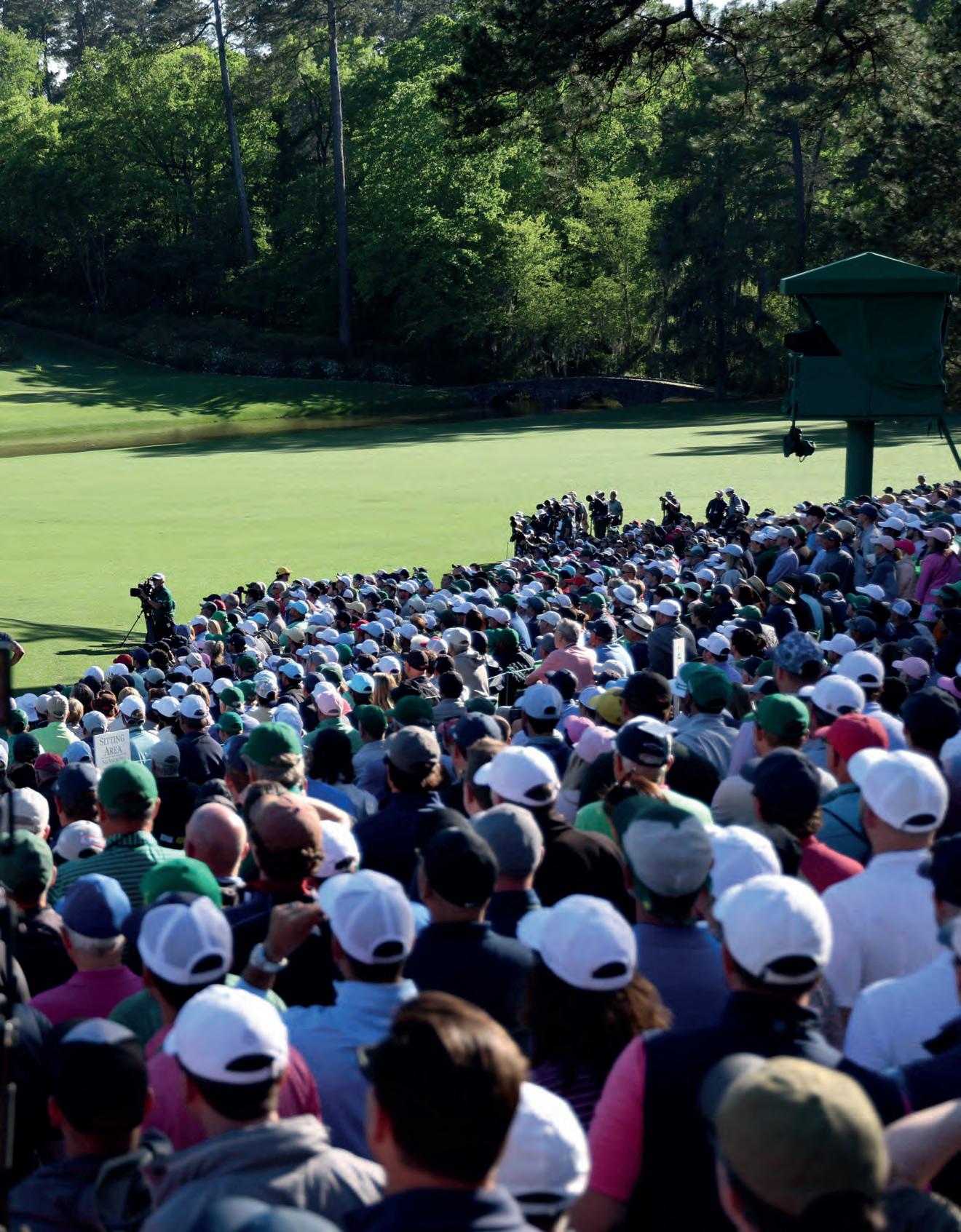
4 minute read
INSIDE AUGUSTA
IT’S ONE OF THE HOTTEST TICKETS IN WORLD SPORT, A BUCKET-LIST MOMENT FOR ANY DEVOUT GOLF FAN. BUT IS THE MASTERS TOURNAMENT REALLY AS MAGICAL AS IT APPEARS ON TV? LUXURY LONDON IS INVITED BEHIND THE ROPE INTO A WORLD OF ARTIFICIAL BIRDSONG AND SPRAY-PAINTED LAWNS
Words: Jeremy Taylor
Advertisement
What would you say is the hottest ticket in global sport? The Champion’s League final, maybe? Wimbledon? How about the Superbowl? I’d go as far as to say the annual Masters Tournament – one of golf’s four major championships, and the only major to be played at the same course each year –is all three of those events rolled into one.
Sports fans from every corner of the globe scramble for insanely inflated tickets to watch golf’s finest tackle a picture-perfect course in Augusta, Georgia, in a competition that dates back to 1934. The random online lottery for tickets opens 1 June the previous year, but there is only around a 0.5 per cent chance of being a lucky applicant (although organisers never reveal exactly how many tickets are available).
Apart from applying and crossing your fingers, the best way to gain access is by befriending an Augusta National member – they’re the people in the green jackets and are each given a small allocation of tickets. Yes, they are the same green jackets famously presented to every winner of the Masters, although even the tournament’s victors aren’t allowed to move their blazers away from the Augusta clubhouse – jackets have to stay in the locker room, on pain of death (they’re a quirky lot at Augusta).
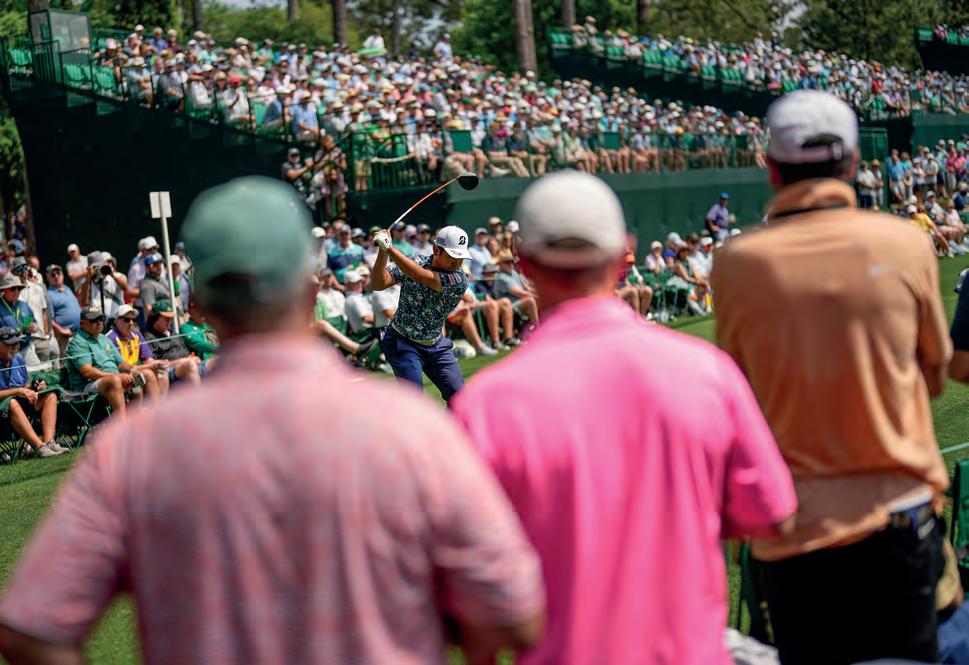
Rumour has it that members sell their spare tickets for up to $10,000 a pop. Extraordinarily, some tickets miraculously end up for sale outside the course gates, changing hands for around $8,000. Touts are often arrested and anyone caught buying a ticket in the street isn’t allowed in. Which is why I’m incredibly grateful to be installed in what is locally known as ‘Mercedesville’ – a luxury estate on the edge of town that is home to the German marque and its invited guests. The enormous house that I’ve been put up in has been rented from a private owner. Properties can charge upwards of $45,000 a week during the Masters – there being a distinct lack of decent hotels in the area. To get me to and from the estate clubhouse, I’m given the keys to a golf buggy. I wouldn’t want to miss out on bands like Hootie & the Blowfish playing in the evenings, after all.
For my invitation, I have the new-look GLE SUV to thank, which Mercedes has chosen to reveal, subtly, at this year’s event. It’s a savvy move, given that overt branding is banned at Augusta – nobody, not even the players, are allowed to display the logos of their sponsors around the hallowed turf. I was barked at by an irate course official for wearing a discreet McLaren baseball cap.
Before I arrived at the course – as Tiger Woods, Jon Rahm and Rory McIlroy were preparing to battle it out for a share of a £14.5 million purse –I was granted some alone time with the new GLE.
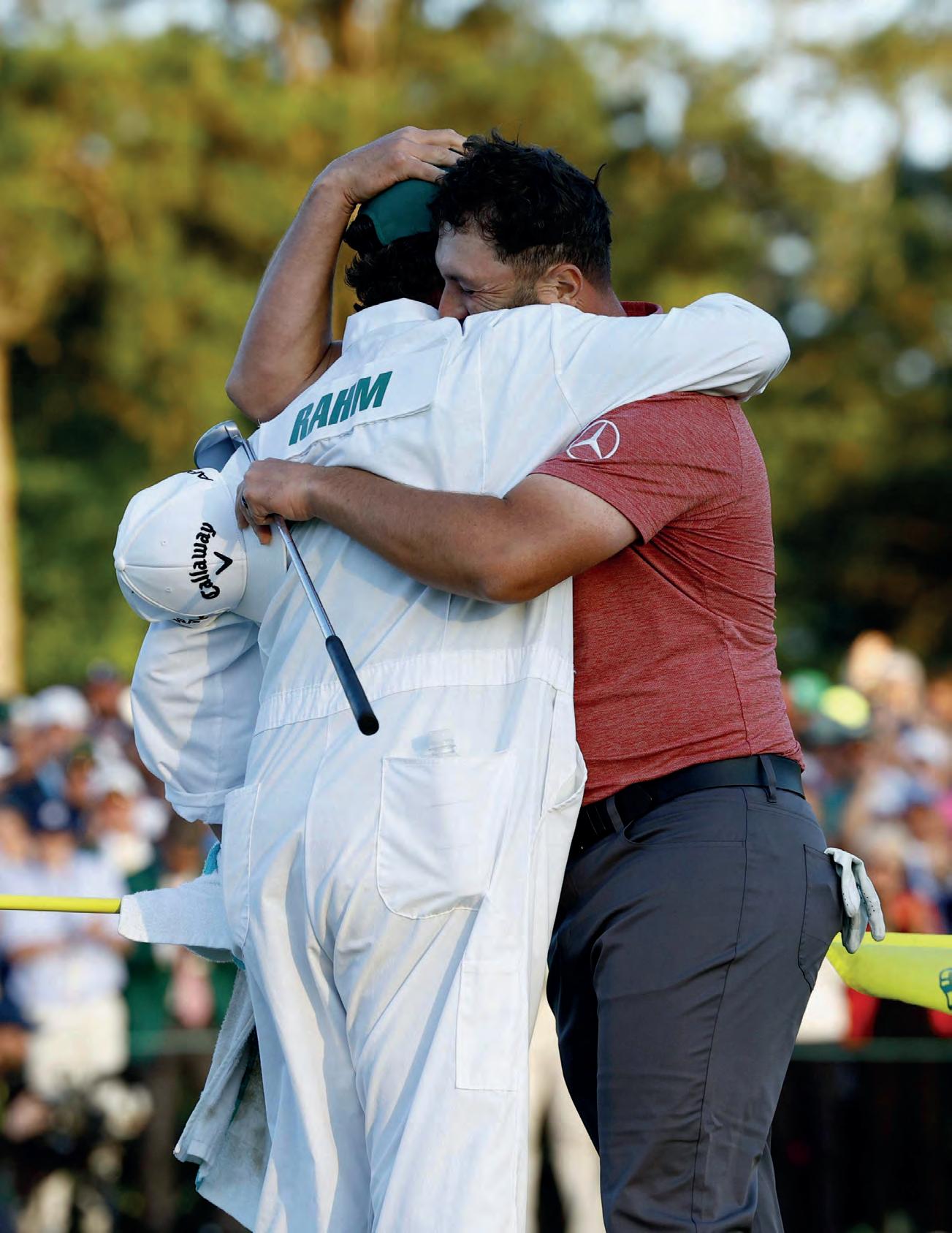
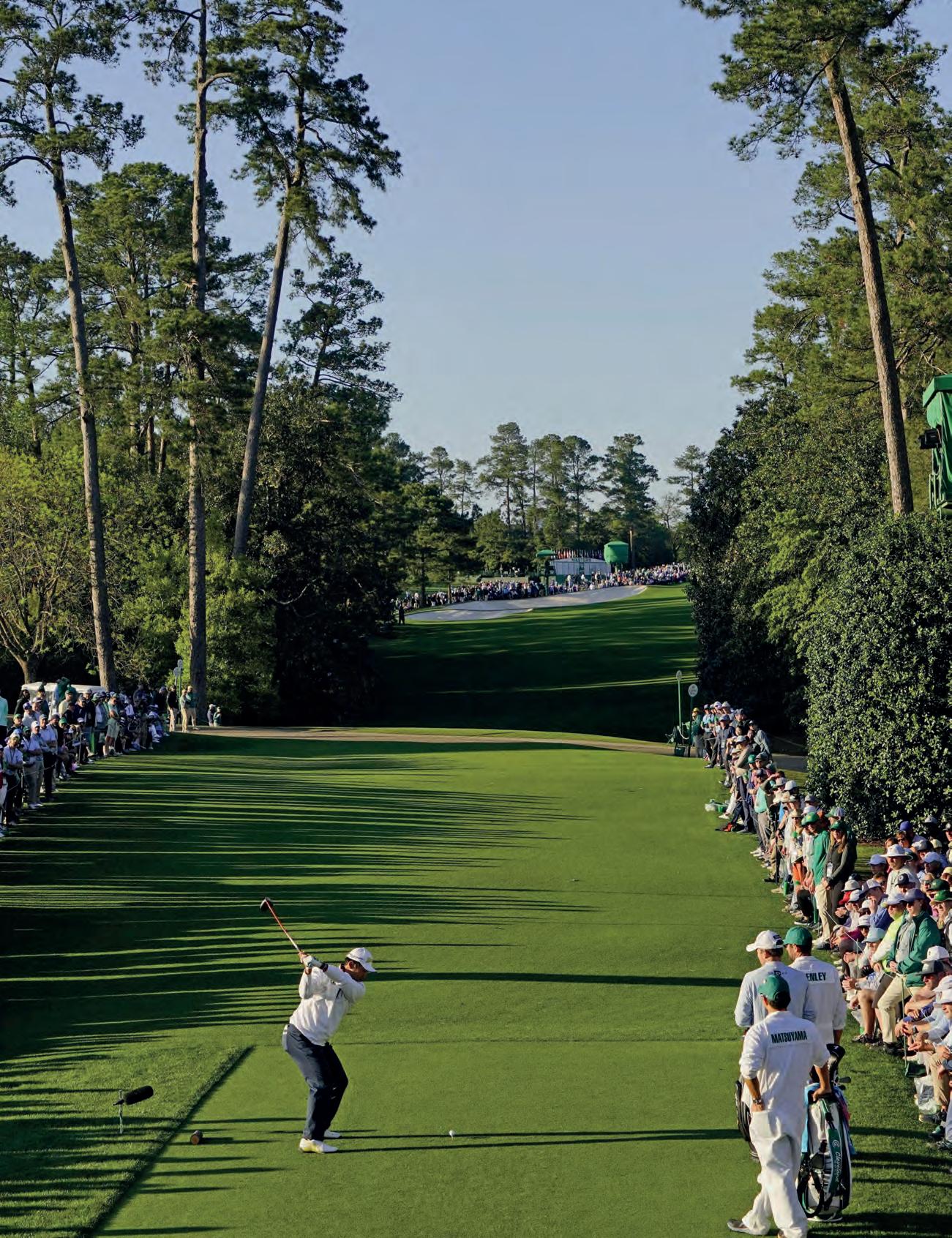
Picking up the car from Atlanta, I headed north-east on Highway 19, passing Cumming and Dahlonega on the way to the ChattahoocheeOconee National Forest. The flatlands there quickly give way to dramatic mountain scenery, where a canopy of trees cling to every hillside.
The GLE is a supremely comfortable drive, with enough trunk space for several sets of golf clubs.
The AMG 53, which I was driving, is one of the performance models, spacious and luxurious – with four-wheel drive if you do end up in the rough.
After winding through the Appalachian Mountains, and then parts of North Carolina, I turned due south to Augusta itself, following the Savannah River state boundary for 170 miles. Mountains turned to savannah and prime farming territory before, eventually, I joined the melee of sports fans heading for the golfing world’s Mecca.
What followed was a weekend-long marathon of traditional pimento cheese sandwiches, chauffeured golf buggies, cold beer, private-chef dinners and conversations with golfing elite and the giants of corporate finance.
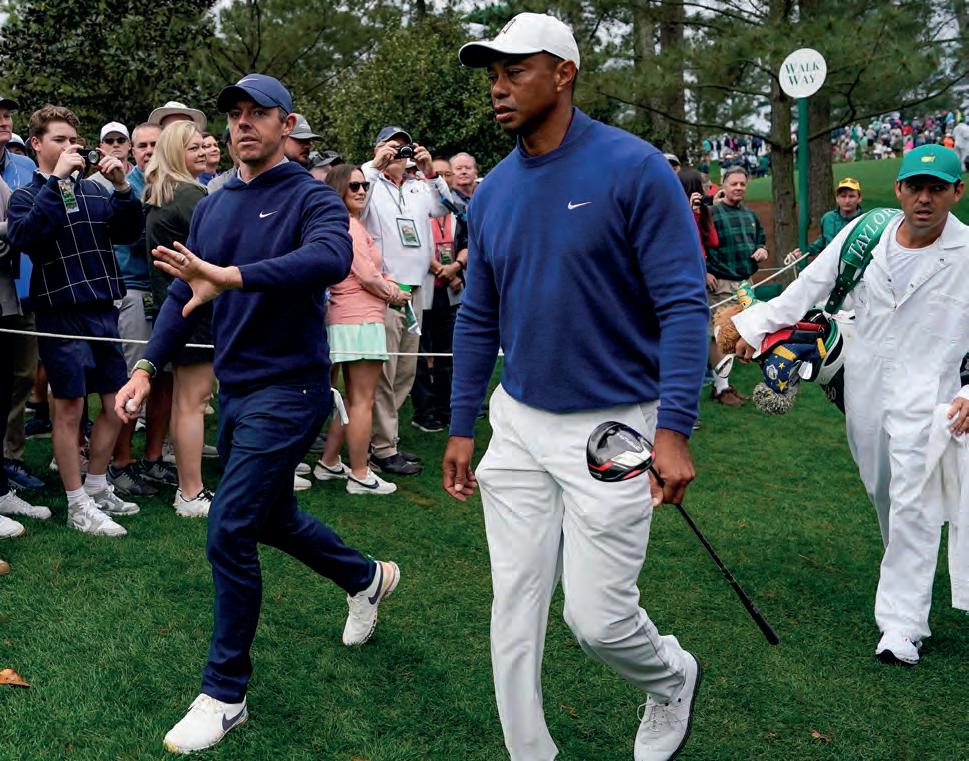
The Augusta course looks like it does on TV. Spectators crowd tree-lined fairways that are encircled by lakes, littered with giant bunkers and surrounded by trademark azaleas – the flowers seeming to blossom just on cue every year. Not everything is as it seems, however.
That birdsong? It’s largely fake, played discreetly through loudspeakers to improve the ambience for spectators. The fairways and greens are faultless, but turf at the boundaries gets trampled by spectators. To keep them looking photogenic, well-trodden paths are spray-painted green. This year, the trees added an additional element of drama – heavy rain and wind bringing at least one crashing down to narrowly miss a group of watchers-on. masters.com; mercedes-benz.co.uk
Each sponsor has a mini clubhouse, with roundthe-clock food, drink and hospitality, plus a giant TV screen at every turn to watch the action unfold. During rounds of canapés, fine wine and cigars, I was invited to meet Bernhard Langer, a two-time Masters champion and Mercedes ambassador.
While tickets are traded for eye-watering sums, if you’re lucky enough to secure one in the ballot, you’ll only pay around $140 per day at face value. Prices of refreshments, too, apparently haven’t changed much since the 1990s – not even for the famous pimento cheese sandwiches.
A little like Glastonbury, or, on a smaller scale, Ascot, attending the Masters is more about the experience, the feeling of being there, than anything you actually see. For many, just a glimpse of seeing Tiger Woods will be enough. Bagging a spot by the 18th on the last day is, of course, the holy grail. Just like Glastonbury, the Masters is about memories. To say that you were there. That you got to taste those sweet pimento cheese sandwiches.
